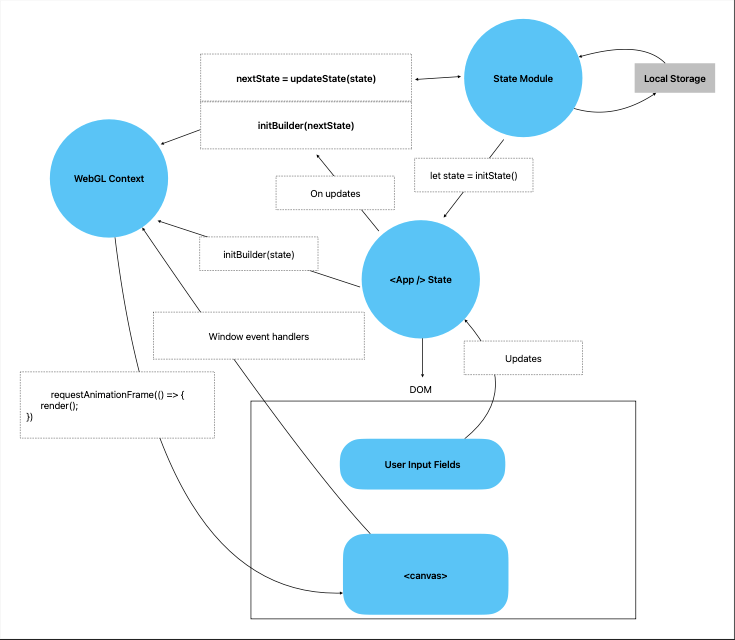WebGL for web apps - rebuilding kte-map-builder
Kill the Evil Devlogs
WebGL is so cool. It's daunting, but worth the learning curve. I avoided it for years because I thought it would only be useful for 3D creative programming. I now see 2D WebGL as the secret to unlocking native performance in web apps for complex UIs.
If you are new to WebGL and want to understand how it works, I strongly recommend WebGL Fundamentals.
This post is a short and sweet summary of how I setup kte-map-builder to use WebGL with Solid.js. This post and the relevant Git repo could be used as "real world" example of how to use WebGL with a modern FE framework.
Lets go.

WebGL is an API to render graphics with the GPU. It uses compiled shaders to run on every pixel in a canvas. It is very fast, but static compared to modern FE frameworks.
I observed two rules while building this. First, the canvas dimensions must be set before initializing the WebGL context. Second, re-rendering the canvas clears the WebGL context. These rules influenced a few attributes of state that could be present on any given field.
- State that effects canvas dimensions (cell counts and size)
- State that needed to be accessed on each
requestAnimationFrame() - Temporary state that could be cleared at any point without inconviencing the user (me). This includes fields for uniform locations and drag coordinates
- Persisted state that the user (me) uses to build a map in multiple sessions
I ended up with two state "sources of truth". First, I wrote a state module that initialized based on localstorage for persisted state. Second, I added some window.__kteFields to the window for temporary state.
I initialized the state in the <App /> and passed it to the main WebGL function initBuilder. Since state was being passed as reference and referenced every frame, all I had to do was use my state updater functions to mutate the state based on user actions.
If a piece of state required a re-init of the WebGL context, I just called initBuilderagain with the updated state.
const App = () => {
const state = initState();
const [foo, setFoo] = createSignal(state.foo);
const [bar, setBar] = createSignal(state.bar);
onMount(() => {
initBuilder(state);
})
function handleFooChange(nextVal) {
stateModule.setFoo(nextVal); // mutation
setFoo(nextVal);
// foo affects canvas size, re init webgl
initBuilder(state);
}
function handleBarChange(nextVal) {
stateModule.convertAndUpdateBar(nextVal); // mutation
setBar(state.bar);
// bar only affects rendering, will be accessed through the
// the reference to state. No re-init is required
}
return <jsx />
}
And thats it! I almost didn't write a blog post about this, but I am super stoked about the performance gains on my map builder and I wanted to share something about it.
Thanks for reading!